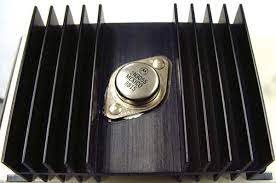scrap--metal
Full Access Member
- Joined
- Sep 15, 2021
- Posts
- 678
- Reaction score
- 1,266
- Location
- MN
- First Name
- Calvin
- Truck Year
- '85, '81
- Truck Model
- K10, K20
- Engine Size
- 305, 350
^ I'm in this camp. As long as it's thermally conductive enough, it should work.You can have a Thermal paste that is also dielectric(most are, but NOT all).
You can also have a dielectric grease that is not thermally conductive.
The DC-4 is not a good thermal conductor and is a silicone dielectric grease.
The Super Lube Heat Sink compound I linked above is a Silicone dielectric grease that has metal particles blended in to make it a good thermal conductor.
That makes me wonder what the thermal conductivity of the paste they used in the factory was? If the new stuff (thermal paste, dielectric grease, etc.) has the same thermal conductivity value (K measured in W/[m*K]) as it the factory thermal paste, then it shouldn't matter what the name on the tube, bottle, syringe says.


